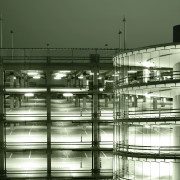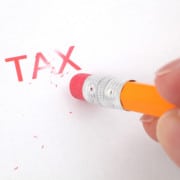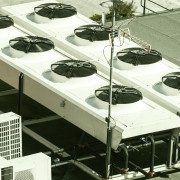Section 179D Commercial Building Deduction Survives US Tax Court Challenge (Somewhat)
A recent United States Tax Court ruling highlights the importance of thoroughly understanding the requirements of §179D and working with an expert in qualifying and certifying energy-efficient commercial building properties.
Project on an Existing Building
Edwards Engineering, an Illinois-based company specializing in heating, ventilation, and air conditioning (HVAC) system design and installation and registered as a licensed engineering firm, claimed a $1.07 million §179D tax deduction for a project it carried out with the U.S. Department of Veterans Affairs. The project involved maintenance services at an Illinois VA hospital.
In 2012, Edwards Engineering entered into a maintenance contract with the Hines VA Medical Center. The contract required Edwards Engineering to provide inspection, testing, maintenance, repair, and emergency services for the temperature control systems in several campus buildings.
In 2013, Hines VA requested additional services, which included adding new control systems to air handling units and emergency replacements of temperature control units in one building. Edwards Engineering submitted quotes for these services, which were accepted by Hines VA, and invoiced $304,640 for the work.
To perform the work, Edwards Engineering obtained the technical information for the existing system, including control prints, mechanical prints, floor plans, and the original sequence of operations. The company conducted a full assessment of the system, modifying the sequence of operations as necessary.
Company Adheres to Required Process
As part of the process, Edwards Engineering also engaged a firm to conduct an Energy Efficient Commercial Building Tax Deduction Study for the 2013 taxable year, a requirement for the §179D tax deduction. The firm also provided Edwards Engineering with an allocation letter for the VA to sign, affirming that it would allocate the full federal §179D income tax deduction related to the HVAC and hot water systems to Edwards Engineering. The VA, being a government entity, cannot claim this deduction and has the right to allocate it.
The study was completed in 2014 and a certificate of compliance was issued, stating that the total annual energy and power costs of the building were reduced by over 50% due to the installation of the systems, that the building met or would meet the energy saving targets outlined in the design plans, and that the inspection and testing procedures were performed in accordance with the National Renewable Energy Laboratory guidelines. The letter also stated that Edwards Engineering should be allocated a §179D deduction of $1,037,237.
Based on this information, the owners of Edwards Engineering claimed the $1,037,237 deduction for the 2013 taxable year.
IRS Challenges Deduction
The IRS disallowed the deduction by notices of deficiency dated July 12, 2018. The IRS agreed that the improvements were depreciable property but disallowed the deduction for several reasons, including that the following conditions outlined in §179D(c)(1)(D) were not met:
-The property was not installed as part of a plan to achieve energy savings.
-The computed energy savings were not derived from the property installed.
-The certification and notice to the building owner required by §179D(d)(5) and (6) were deficient.
The Tax Court disagreed, stating that “subjective intent” is not required to achieve an energy savings target. The projects were carried out to address the need for emergency replacements, resulting in improved energy efficiency. Edwards Engineering’s counsel noted that it is “extremely rare” for Congress to impose a subjective intent requirement for a tax incentive and that the IRS
The §179D Allocation Amount
In §179D (b), the deduction allowed is not to exceed the excess, if any, of the product of $1.80 and the square footage of the building, over the aggregate amount of the section 179D deductions taken with respect to the building for all prior taxable years. In this instance, there is no indication in the record that any section 179D deductions were taken for this building in prior taxable years. Thus, Edwards Engineering took $1,037,237.00, which is equal to the product of $1.80 and 596,243, the square footage of the building, based on the position that costs of prior projects not performed by Edwards Engineering were also considered part of the EECBP costs.
The tax court ruled issued a costly deficiency to the tax payer after determining that Edwards Engineering could not deduct more than $304,640, based on the total cost billed to Hines VA for the cost of the Energy Efficient Commercial Building Property (EECBP) placed in service during the 2013 tax year.
Walker Reid Summary of the findings
This case serves as a clear resolution for two previously unclear areas in the interpretation of independent third-party certifiers:
- Determining the authorized individual to sign the allocation letter on behalf of government building owners
- Specifying the utilization of “percentage” vs “Dollar Amount” indicated in the allocation letter.
- Recognizing alternative activities that qualify as design, as long as they do not merely entail the installation of Energy Efficient Commercial Buildings Property (EECBP).
It also highlights the importance of engaging with reputable and knowledgeable firms such as Walker Reid, to avoid the consequences of taking an overly aggressive stance. Such actions may result in IRS penalties, tax repayment, and operational disruption. At Walker Reid, we prioritize maximizing incentives for clients while strictly adhering to the reasonable interpretation of tax law.
David Diaz, a partner at Walker Reid Strategies, a licensed engineering firm specializing in §179D studies and §45L certifications, is an expert in energy efficiency and tax services. You can find more information about him and his insights at www.walkerreid.com and through webinars. You can also reach him at ddiaz@walkerreid.com for more details.









